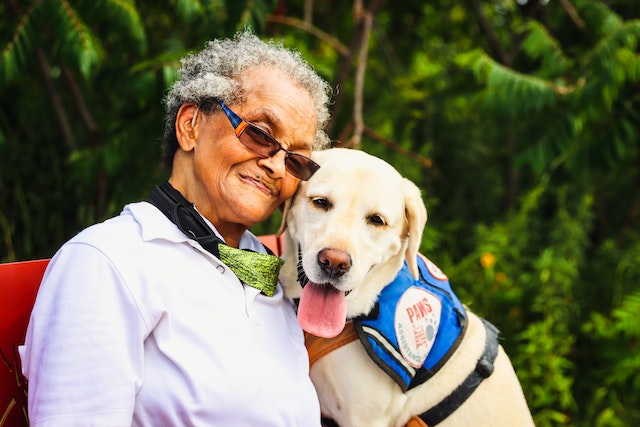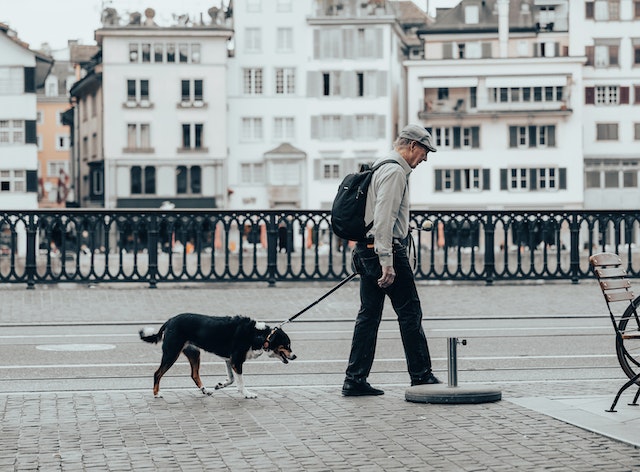We tend to feel lonely as we grow older. Our children may get busy with their lives, and we may be placed in a senior care facility. Feeling lonely is normal, but it doesn’t have to affect you negatively. One of the ways to combat loneliness is with the companionship of a pet.
Pets help improve the well-being of people at any age level. They give us joy, company, and purpose in our daily lives. This is why people with depression and anxiety are encouraged to have pet therapy. And seniors can have them too! Studies show that pet therapy can improve our elders’ overall quality of life, especially those suffering from mental health conditions. [1]
This article discusses pet therapy and how senior citizens can benefit from it.
What is Pet Therapy?
Pet therapy, also referred to as animal-assisted therapy (AAT), is a guided interaction of a person or patient with a trained emotional support animal. The most common animals used in pet therapy are cats and dogs, but birds, rabbits, and horses can also be used.
When your doctor suggests you take pet therapy, a trained handler takes the animal to your home or retirement community. This allows you to experience the benefits of interacting with pets without the responsibility of pet ownership.
What are the Benefits of Pet Therapy for Seniors?
Pet therapy gives you an opportunity to form a bond with a friendly animal. With that, your mental, emotional, and physical health may improve. Here are scientifically proven benefits of pet therapy. [2]
1. Decreases stress levels
Cortisol is a chemical released in your brain that triggers you to be more alert. But when there’s too much cortisol, it makes you more stressed. Pet therapy lowers cortisol levels, making you calmer and more relaxed.
Read more: Healthy Ways to Cope With Stress in Life
2. Lowers the feeling of isolation and loneliness
A survey showed that loneliness in senior citizens from long-term care facilities improved with AAT.[3] This may be due to the increased serotonin, a chemical associated with satisfaction, happiness, and optimism. Pets act as natural antidepressants because they make us laugh, smile, and feel better.
3. Lowers blood pressure and cardiovascular risk
Studies show that pet therapy significantly decreases blood pressure and heart rate, which can lower the risk of suffering from cardiovascular diseases.[4] This may be due to the calming effect brought by the companionship of pets. In addition, walking with pets like dogs is a form of moderate exercise that can help us be physically active.
4. Improves mood
Interactions with pets allow our bodies to release more oxytocin and dopamine. [5] Oxytocin and dopamine are also known as the love and happy hormones, respectively. Increased levels of these hormones results in lower anxiety and higher satisfaction. It helps seniors gain a more positive outlook on life.
5. Increases social interaction
Animals listen to us without any biased judgment. When seniors are uncomfortable sharing some of their thoughts with family or friends, they can talk to animals instead.
Conclusion
If a senior is active enough to properly care for a pet, they can opt to own a pet. Owning a pet may mean more responsibilities, but the good news is that you will have a companion every day. However, keep in mind that pet therapy doesn’t replace the love that our elders feel from their families. So, hug your grandparents and give them the love and attention that they need.
Do you own an assistance animal? Register your pet today.
The Service Animal Registry of California invites you to have your assistance animal registered in order to designate its status. We also encourage you to take our online classes so you can be fully aware of your rights and gain more knowledge about your support animal.
Finally, we present to you our book entitled, “ASSISTANCE ANIMAL LAWS: LEARN YOUR RIGHTS REGARDING SERVICE ANIMALS, EMOTIONAL SUPPORT ANIMALS, THERAPY PETS, AND OTHER DOGS, CATS, AND ASSISTANCE ANIMALS” to provide you with a complete education on assistance animals.
Purchase your copy of the book by clicking the image below.



